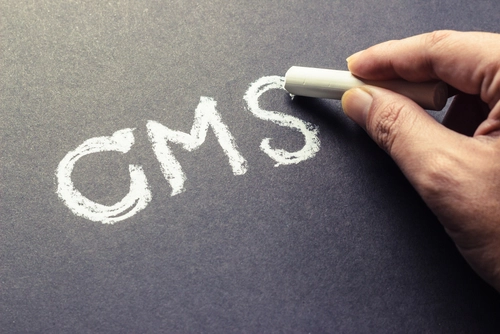Ophthalmology and Optometry Coding Alert
Excising Eyelid Lesions? Watch When You Pair These 2 Lesion Types
Pay attention to a key exception in the excision code descriptors. Chalazia, anyone? If your physician is excising these exotically-named eye lesions, you’ll want to pay attention to specific Correct Coding Initiative (CCI) edits that could affect your reimbursement for those surgery services. In its latest round of CCI Procedure-to-Procedure (PTP) edits, (version 25.2), effective July 1, CMS delivers the following additions involving lesion surgery coding. Name That Lesion CCI 25.2 designates CPT® codes 67800 (Excision of chalazion; single), 67801 (… multiple, same lid), 67805 (… multiple, different lids), and 67808 (… under general anesthesia and/or requiring hospitalization, single or multiple) as Column 1 codes, with 67840 (Excision of lesion of eyelid (except chalazion) without closure or with simple direct closure) as a Column 2 code for each of these. That means you shouldn’t report the chalazia excision codes with the general eyelid lesion excision code. This directive seems clear, given the “except chalazion” in the 67840 code descriptor. Exceptions to the exception: Each of these bundles has a modifier indicator of 1, however, so you can append modifier 59 (Distinct procedural service) to 67840 in situations when the physician excises another type of lesion (not a chalazion) from the eyelid during the same session. For example: Your physician may excise an eyelid cyst (that is not a chalazion) on a contralateral eyelid. If the doctor decides to remove both the cyst and a chalazion at the same surgical session, and the cyst and chalazion are clearly indicated to be on different lids, you may append the modifier 59 to 67840. Don’t attempt to unbundle 67805 (Excision of chalazion; multiple, different lids) and 67840, unless your documentation clearly states where the chalazia were and proves that they were not on the eyelid where the eyelid lesion, or cyst, was located/excised, advises Gina Vanderwall, OCS, CPC, CPPM, financial counselor with Finger Lakes Ophthalmology of Canandaigua, NY. Wait, What’s a Chalazion? No, it’s not first cousin to a chameleon. A chalazion is a swollen bump on the eyelid, says the American Academy of Ophthalmology, which “happens when the eyelid’s oil gland clogs up.” Chalazia may start as styes, the AAO states, and may be painless at first, but as they grow, the eyelid may get red and/or swollen and press on the eye, causing blurry vision. Resource: To read more, visit www.aao.org/eye-health/diseases/what-are-chalazia-styes. Watch for HCPCS Bundles, Too The latest CCI edits also add a long list of codes from the CPT® Medicine section, including 92012 (Ophthalmological services: medical examination and evaluation, with initiation or continuation of diagnostic and treatment program; intermediate, established patient) and 92014 (...comprehensive, established patient, 1 or more visits), as Column 2 codes with the following three HCPCS codes: When donkeys fly: It would be safe to say that the likelihood of an ophthalmologist ever reporting an ophthalmological exam with these services would be just about nil. Still, it’s worth mentioning that the CCI edits list a modifier indicator of 1 with these HCPCS and ophthalmic office visit codes. If it was ever appropriate in these situations, you would append either modifier 25 (Significant, separately identifiable evaluation and management service by the same physician or other qualified health care professional on the same day of the procedure or other service) or modifier 57 (Decision for Surgery) to the office visit code, depending on whether the performed procedure is major (90-day global period) or minor (0- or 10-day global period), says Vanderwall. Resource: To see the quarterly CCI PTP edits, including version 25.2, go to www.cms.gov/Medicare/Coding/NationalCorrectCodInitEd/Version_Update_Changes.html.
Related Articles
Ophthalmology and Optometry Coding Alert
- NCCI 25.2 Edits:
Excising Eyelid Lesions? Watch When You Pair These 2 Lesion Types
Pay attention to a key exception in the excision code descriptors. Chalazia, anyone? If your [...] - CCI Edits Basics:
What's Going on With the Columns?
Can’t make heads or tails of the columns in the Correct Coding Initiative (CCI)? Understanding [...] - Coding Case Study:
Choose IOL Removal Codes Based on Portion, Approach
Watch that you don’t confuse an IOL with a natural lens—or that could blur your [...] - Practice Management Clip and Save:
5-Step Process Sets Your Office Up for More Efficiency — And Profitability
Call forth your inner Sherlock and follow clues to solve hidden problems. If you could [...] - You Be the Coder:
Identify the Right Approach, Location for Aqueous Drainage Implants
Question: Our physician used a Xen Gel implant on a glaucoma patient. Should I bill [...] - Reader Question:
Select Strabismus Code by Muscle Type
Question: Our provider performed a right medial rectus disinsertion/reinsertion of the muscle for nystagmus. Can [...] - Reader Question:
Do Annual Diabetic Exams Require a Copay?
Question: I always seem to have trouble when patients come in for a yearly diabetic [...] - Reader Question:
Bundle Contact Bandages
Question: Is there a supply code for a bandage contact lens that I can bill [...]




